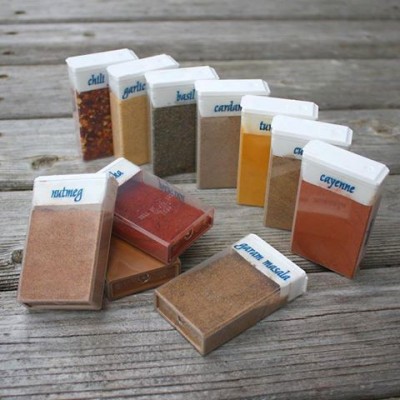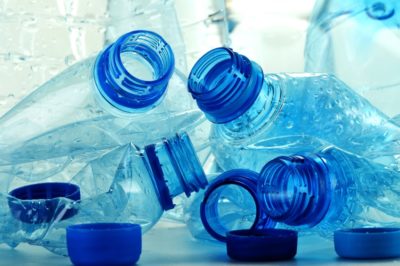 It’s not just frugal, it’s ecologically smart.
It’s not just frugal, it’s ecologically smart.
If you’ve got used, empty plastic containers in your garbage bin ready for pickup by the garbage collectors, or sitting in a pile in your garage or shed, try to salvage and repurpose them into useful things. Save yourself a few dollars from buying items you could otherwise fashion out of them. You’d be contributing less to the garbage collection, and be helping the environment, too.
Most food manufacturers and consumers favor plastic bottles over glass because they’re lightweight, economical, durable and shatter-resistant. Most of these containers, however, are non-biodegradable.
The two most common types of resin used in making these plastic bottles are polyethylene terephthalate (PET) and high-density polyethylene (HDPE). PET bottles, marked by the resin identification code number 1 printed or embossed on the bottom, are normally used for water, juice, soda, oil, peanut butter and coffee creamers. They vary in thickness and rigidity. The sturdier HDPE bottles — the ones used for milk, liquid detergents and many other chemical products — are labeled with code number 2. Both can be repurposed for a hundred or more uses, but here are the top 11 ways you can reuse them at home, in the garden or in an emergency situation.
1. Food storage. We’re all familiar with those 5-gallon buckets commonly used for food storage. They sit nicely in our pantries, cellars or large storage rooms. But why not keep smaller containers in the kitchen for easy access to smaller amounts of food you often use when cooking? You can store grains, beans, flour, pasta, cereal, sugar, nuts, snacks, pet food or any dry, shelf-stable items in PET and HDPE bottles — they’re airtight, handy, portable and make less noise when moved around (compared to glass, tin or ceramic). They’re all-around kid and elderly friendly.
Depending on what you intend to store in them, the qualities you’ll want to consider are their size (especially that of their opening), thickness, color or transparency, and stackability. Be sure to label each container you fill with the necessary details – product name, flavor or kind, expiration date, etc. For long-term food storage, you could wrap sticky tape around the sides of the bottle cap for maximum air and moisture-proofing.
2. Organizers. Smaller containers like pillboxes make ideal receptacles for tiny utility items around the house that could easily get lost — paperclips, buttons, pins, rubber bands, coins and especially metals like screws, nails and bolts that you don’t want getting rusty.
3. Travel kits. When traveling, RV living or camping, pillboxes are also just the right size to put together a sewing kit – they can hold a couple of needles, a spool of thread, some pins and a few buttons. They’re also waterproof and are perfect to store matches, cotton balls/buds and Band Aids in. For cookouts, mint candy (Tic Tac) containers are great for spices, dried herbs, sesame seeds or anything you might need small amounts of.
4. Sealers for plastic bags. Got a plastic bag that needs sealing? You could cut the caps off of PET bottles (Gatorade and juice bottles have nice, wide openings) and slip them on the top of your bag, fold the edges of the bag over the ring of the cap, and twist the lid back on to the ring. Now you have an airtight, re-sealable bag. You can do this with plastic and Mylar bags of any dry food or non-food item that you bought that needs resealing – beans, sugar, rice, detergent powder, fertilizers etc. No more twist-tying or looking for rubber bands. Makes for easy pouring, too.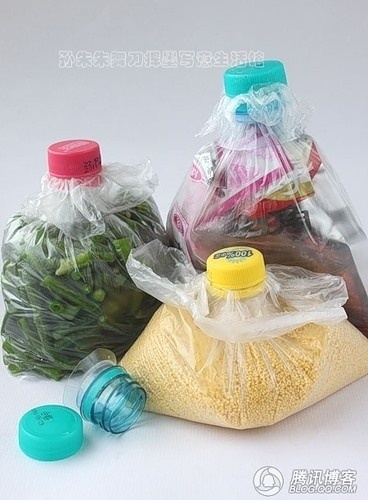
5. Utensils, bowls and saucers. It’s easy to see how you can turn the tops of PET bottles into funnels. But did you know you could fashion emergency spoons out of them, too? The bottoms of big, sturdy HDPE milk jugs could also be turned into scoops, mini-shovels and even dust pans.
On a picnic, when everyone’s eaten and the PET bottles have been emptied, you can cut the bottoms off of them, wipe any moisture off, and you’ll have quick, disposable bowls to serve nuts, fruit, or any bite-sized snacks on.
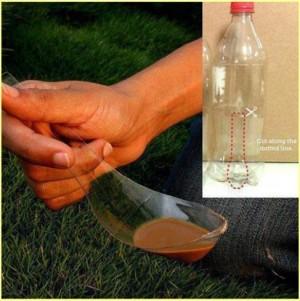
Image source: socreativethings.com
6. Animal feeders. If you have a cat or a small dog and are going away for a few days’ vacation, you won’t have to worry about their feeding. PET bottles can also be turned into pet food dispensers.
If you’re trying to attract birds to your garden to help pollinate your plants, hang some PET bottle feeders up on trees. Punch holes on the sides about the size of a dime, and stick a dowel or old wooden spoon through to the other side to serve as perches. Poke a couple of tiny holes just above the perches for the grains to peek out and the birds can peck on them.
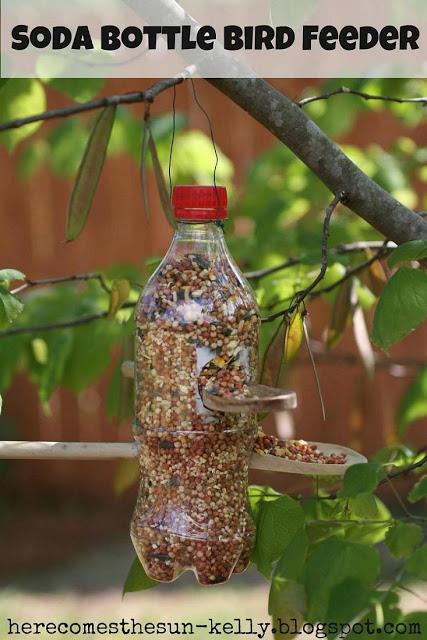
Image source: technationnews.com
7. Garden growers. Containers of various shapes and sizes can be turned into planters, terrariums, mini greenhouses, hydroponic grow bottles, drip irrigators, watering cans, sprinkler ends for hoses, and even waterproof tags or markers. They’re easy to clean and won’t grow mosses on the outside. Use ice cream tubs or gallon jugs to hold bigger plants.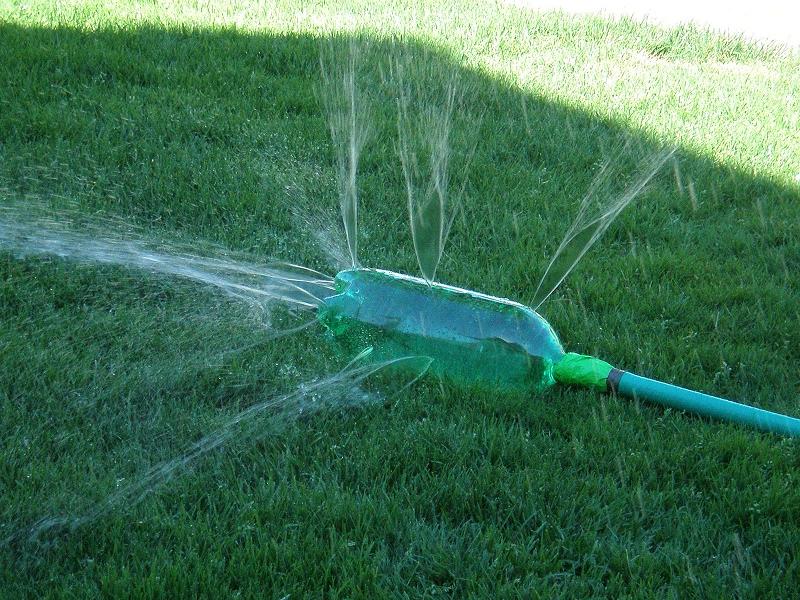
8. Solar lightbulbs. This was developed by Brazilian mechanic Alfredo Moser, who filled a PET bottle with water and mounted it on the roof of his house. The water in the bottle refracted the sunlight from outside and provided a 55 to 60-kilowatt power illumination in his dark, window-less room. His innovation spread quickly and is now used by many communities across the developing world such as Kenya and the Philippines. Filipino users add chlorine to the water to prevent algae from growing inside the bottle.
Story continues below video
9. Houses. Yes, houses. In the developing world, PET bottles are not only lighting up houses, they ARE becoming houses. When used as molds filled with mud or soil for constructing walls, they are reported to be 18 times stronger than regular bricks and can withstand bullets and earthquakes.
Story continues below video
On their own, PET bottles can be assembled and fastened together to serve as siding and roofing materials for temporary shelter in places where extreme heat, cold and winds are not a problem.
If you’re looking to build a playhouse for your kids in the backyard, PET bottles could be just the cheap – actually, no-cost — building material you’re looking for.
10. Rafts. In a survival situation, one can’t be picky when looking for salvageable floating devices. When tied or taped together, PET bottles make an excellent DIY raft or kayak. If you live in a hurricane or flood-prone area, you might want to consider storing these highly buoyant materials in your garage — you never know if you or a neighbor might be needing them for survival transportation. Otherwise, they’d make fun and cheap toy rafts for kids in the pool.
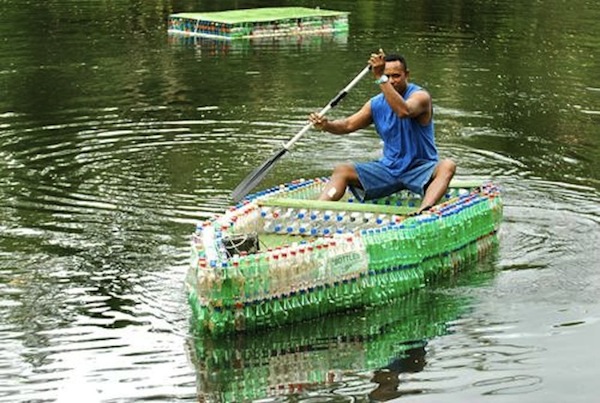
Image source: ippinka.com
11. Solar water disinfection. Another survival use for PET bottles is water disinfection, also widely used in developing countries. If there is water you’re not sure is safe to drink, put it in a PET and expose it to the sun for 6 hours. The ultra-violet radiation will kill most of the pathogens that can cause diarrhea and other gastric infections.
So the next time you think of disposing plastic containers, think again. They’re an all-around, multi-purpose resource that could serve the most unheard-of and totally unexpected uses. It would be wise to keep them handy not just for now, but also for emergency situations in the future.
Sign up for Off The Grid News’ weekly email and stay informed about the issues important to you
 Off The Grid News Better Ideas For Off The Grid Living
Off The Grid News Better Ideas For Off The Grid Living

